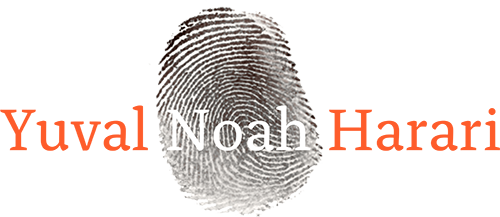Excerpt from Part 1 – Sapiens: A Brief History of Humankind
There were humans long before there was history. Animals much like modern humans first appeared about 2.5 million years ago. But for countless generations they did not stand out from the myriad other organisms that populated the planet.
Homo sapiens has kept hidden an even more disturbing secret. Not only do we possess an abundance of uncivilized cousins; once upon a time we had quite a few brothers and sisters as well. We are used to thinking about ourselves as the only humans, because for the last ten thousand years, our species has indeed been the only human species around. Yet the real meaning of the word human is “an animal belonging to the genus Homo,” and there used to be many other species of this genus besides Homo sapiens.
It’s a common fallacy to envision these species as arranged in a straight line of descent, with ergaster begetting erectus, erectus begetting the Neanderthals, and the Neanderthals evolving into us. This linear model gives the mistaken impression that at any particular moment only one type of human inhabited the earth, and that all earlier species were merely older models of ourselves. The truth is that from about 2 million years ago until around 10,000 years ago, the world was home, at one and the same time, to several human species.
Despite their many differences, all human species share several defining characteristics. Most notably, humans have extraordinarily large brains compared to other animals.
But if giant brains are such a good idea, why are they so rare in the animal kingdom?
The fact is that a jumbo brain is a jumbo drain on the body. It’s not easy to carry around, especially when encased inside a massive skull. It’s even harder to fuel. It accounts for about 2–3 per cent of total body weight, but it consumes 25 per cent of the body’s energy when the body is at rest. By comparison, the brains of other apes require only 8 per cent of rest-time energy. Archaic humans paid for their large brains in two ways. Firstly, they spent more time in search of food. Secondly, their muscles atrophied. Like a government diverting money from defence to education, humans diverted energy from biceps to neurons. It’s hardly a foregone conclusion that this is a good strategy for survival on the savannah. A chimpanzee can’t win an argument with a Homo sapiens, but the ape can rip the man apart like a rag doll.
Today our big brains pay off nicely, because we can produce cars and guns that enable us to move much faster than chimps, and shoot them from a safe distance instead of wrestling. But cars and guns are a recent phenomenon. For more than 2 million years, human neural networks kept growing and growing, but apart from some flint knives and pointed sticks, humans had precious little to show for it. What then drove forward the evolution of the human brain? Frankly, we don’t know. It’s one of nature’s biggest mysteries.
Another singular human trait is that we walk upright on two legs. Standing up, it’s easier to scan the savannah for game or enemies, and arms that are unnecessary for locomotion are freed for other purposes, like throwing stones or signaling.
Yet walking upright has its downside. The skeleton of our primate ancestors developed to support a creature that walked on all fours and had a relatively small head. Adjusting to an upright position was quite a challenge, especially when the scaffolding had to support an extra-large cranium. To this very day, humankind has been paying for its lofty vision and industrious hands with backaches and stiff necks.
Women paid extra. An upright gait required narrower hips, constricting the birth canal – and this just when babies’ heads were getting bigger. Death in childbirth became a major hazard. Women who gave birth earlier, when the infant’s brain and head were still relatively small and supple, fared better and lived to have more children. Natural selection consequently favoured earlier births. And, indeed, compared to other animals, humans are born prematurely, when many of their vital systems are still under-developed. A colt can trot shortly after birth; a kitten leaves its mother to forage on its own when it is just a few weeks old. Human babies are helpless, dependent for many years on their elders for sustenance, protection and education.
This fact has contributed greatly both to humankind’s extraordinary social abilities and to its unique social problems. Lone mothers could hardly forage enough food for their offspring and themselves. So raising children required constant help from other family members and neighbours. It takes a tribe to raise a human. Evolution thus favoured those capable of forming strong social ties. In addition, since humans are born underdeveloped, they can be educated and socialised to a far greater extent than any other animal. Most mammals emerge from the womb like glazed earthenware emerging from a kiln – any attempt at remoulding will only scratch or break them. Humans emerge from the womb like molten glass from a furnace. They can be spun, stretched and shaped with a surprising degree of freedom. This is why today we can educate our children to become Christian or Buddhist, capitalist or socialist, warlike or peace-loving.
We assume that a large brain, the use of tools, superior learning abilities and complex social structures are huge advantages. It seems self-evident that these have made humankind the most powerful animal on earth. But humans enjoyed all these advantages for a full 2 million years, while remaining weak and marginal creatures. They dwelt in constant fear of predators, subsisted mainly by gathering plants, scooping up insects, stalking small animals, and eating the carrion left behind by other more powerful carnivores.
One of the most common uses of early stone tools was to crack open bones in order to get to the marrow. Some researchers believe this was our original niche. Just as woodpeckers specialise in extracting insects from the trunks of trees, the first humans specialised in extracting marrow from bones. Why marrow? Well, suppose you observe a pride of lions take down and devour a giraffe. You wait patiently until they’re done. But it’s still not your turn because first the hyenas and jackals – and you don’t dare interfere with them – scavenge the leftovers. Only then would you and your band dare approach the carcass, look cautiously left and right – and dig into the only edible tissue that remained.
This is a key to understanding our history and psychology. The position of humans in the food chain was, until quite recently, solidly in the middle. It was only in the last 100,000 years – with the rise of Homo sapiens – that man jumped to the top of the food chain.
That spectacular leap had enormous consequences. Other animals at the top of the pyramid, such as lions and sharks, evolved into that position very gradually, over millions of years. This enabled the ecosystem to develop checks and balances that prevent lions and sharks from wreaking too much havoc. As lions became deadlier, so gazelles evolved to run faster. In contrast, humankind ascended to the top so quickly that the ecosystem was not given time to adjust. Moreover, humans themselves failed to adjust. Most top predators of the planet are majestic creatures. Millions of years of dominion have filled them with self-confidence. Sapiens by contrast is more like a banana republic dictator. Having so recently been one of the underdogs of the savannah, we are full of fears and anxieties over our position, which makes us doubly cruel and dangerous. Many historical calamities, from deadly wars to ecological catastrophes, have resulted from this over-hasty jump.








